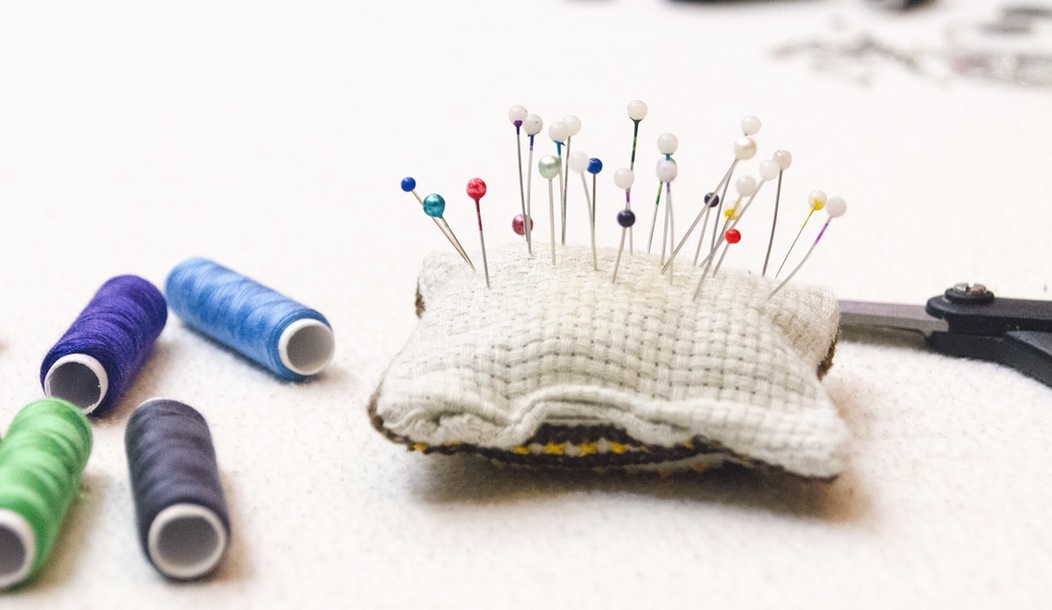

For fashion designers, bringing your idea from sketch to initial sample is often the most exciting stage – developing new ideas into tangible, wearable products. While many creatives can easily wrap their minds around the design phase, providing direct critiques and clear edits to the product development process, the stages that follow tend to get muddled.
Just how do you turn your final samples into stock of a successfully completed production run?
There are many intricate steps within pre-production and production – but first and foremost, finding the ideal partner for both phases is essential. You have two options: you can work with a full service company or you can work with independent contractors.
Full Service Production Support
With full pre-production support, you’re generally left with little production-related work to do, beyond signing off on all final decisions. Think of this option as hiring a team of experts who will fully support your brand in a customized manner.
Independent Contractors
As an alternative to hiring a full service company, you may opt to work with independent contractors during pre-production and then contract directly with a factory for production.
If you are considering this more hands-on route, you will want to decide which of the pre-production tasks you are capable of owning yourself, and which tasks you’ll require expert assistance on.
This, in combination with your budget, will help to determine what type of partner(s) are best for you to seek out.
In considering whether to partner with a full-service company or choosing the route of multiple independent contractors as partners, you will want to do all of the following things:
- Review digital and/or physical examples of previous work to ensure quality and construction meet your standards.
- Ask factories what other brands they work with. Do these other brands fit with your goal quality and retail price point?
- Know your budget and goal production quantities! Approach all potential partners with a job proposal, including the total production quantity per style and the total cost you are willing to pay. Can this partner accommodate your budget, or a cost within reach?
- If approaching a factory for production, the job proposal should also include finalized tech sketches and/or samples. All factories will require to review your products in combination with your full job proposal before they agree to the production order.
- Know your timeline. Have a goal date in mind for the pre-production and production work to be completed. Can this partner accommodate your deadline?
In vetting potential partners it is extremely helpful to have knowledge of best practices in negotiating. Take all of the following into consideration when preparing to negotiate production with potential factories:
- Before proposing anything to a factory, you can ask for average costs of a few generic garment types that relate to your products. This will help to see how your budget goals align with their “average” costs.
- Typically, if you go to the factory with just a production order and ask for the cost associated, you will receive the highest cost possible.
- It’s best to propose the full scope of a job to the factory along with a goal budget. It cuts to the chase and speeds up communication with the factory, as it gives them insight into whether your retail price point is a good fit for their facility. If the cost you propose is too low for the work involved, the factory will not be afraid to tell you what they must charge – you can choose to negotiate from there.
- To start, request a lower total cost than the maximum of your budget. You will be able to negotiate with most factories, and negotiating up toward your goal budget yields a better cost than negotiating down from the high cost they will likely suggest.
Production Quantity Averages
- In the US, average minimums begin at 50 units, yet some factories are willing to go as low as 20 units. Note: your per unit cost will increase significantly as your production quantity decreases below 50 units.
- “Minimums” typically reference the quantity per style and per color, i.e.:
- An order of 100 total units in 5 colorways breaks down to a 20 unit minimum.
- 20 units X 5 colors = 100 total units per style.
- Overseas, average minimums begin at 1000 units, i.e.:
- An order of 5000 total units in 5 colorways breaks down to a 1000 unit minimum.
- 1000 units X 5 colors = 5000 total units per style.
Other Production Tips
- Be realistic with your pre-production and production timelines. Do the research to know the industry standard timelines and the standard cycle of fashion seasons.
- Even if you are a “seasonless” brand, you must still consider this cycle in reference to estimating factory capacity. Well-known factories are usually booked months in advance of NYFW.
- How do you prefer to communicate – email, phone calls, in-person meetings? You will want to find a partner that communicates well in a manner that works best for you. I recommend starting a new relationship with an initial phone call and if possible, an in-person meeting. If you prefer communicating via email throughout projects, and you can’t get the factory to communicate well via email, you may have a conflict. I like to approach numerous factories with the job proposal to see who I can negotiate the best possible price with while simultaneously testing our ability to communicate well. The factories that you can communicate best with will shine!
- Visit the manufacturing facility, and request to do a production floor walk-through before committing to a factory partner. A factory’s willingness to introduce their full team and allow a potential client to walk the production floor is very telling. Is the facility a comfortable working environment? Do staff seem happy and open, or do they refuse to make eye contact?
After compiling all the research to make your final decision, there is definitely something to be said about going with your gut. Ask yourself:
- What company generally feels the best?
- Beyond the budgets and timelines, who will you be able to have a long-lasting, rewarding, working relationship with?
- Which company most accurately understands your product and vision?
These are all important final questions to ask before you take this next step to launching your clothing label. Keep in mind, even if you are new to the industry, YOU are the one hiring this partner. You will want to ensure that you feel great about who you hire in all facets. This concept is really no different than if you were hiring an employee. There is power in your role as an entrepreneur – Own it!

Guest Post: Mallory Curlee-Green, Design Director at Trunkist, an Apparel Design Firm. Trunkist offers expert apparel design and development, production management, and fashion industry consulting. We help our client’s bring their product ideas to life: from sketching initial concepts, to sourcing all materials, to perfecting fit on initial samples. Additionally, we assist our clients in finding an ideal production partner, and then manage the production process through one of our third-party factories.

Ibrahim
An insightful article but I diasgree with the international MOQ’s stated.
We are working with US and European designers and sometimes we work with quantities as low as 200 not 1000 as stated above
Burcu Yildirim
That totally changed i agree to Ibrahim we also produce low quantities even 20 per style sometmes.
Sunny
I would like to know if I want to see my designs but don’t know how to draw is there an app I can use to bring my ideas to life?
Sharmon
Hi Sunny,
I understand the dilemma, I’ve been searching for a good one myself since I usually get all my ideas on the go. Fortunately I can draw, I’m no Picasso, but I do ok. You can contact me if you want some help. I can maybe get some initial sketches done for you. I don’t mind helping out.